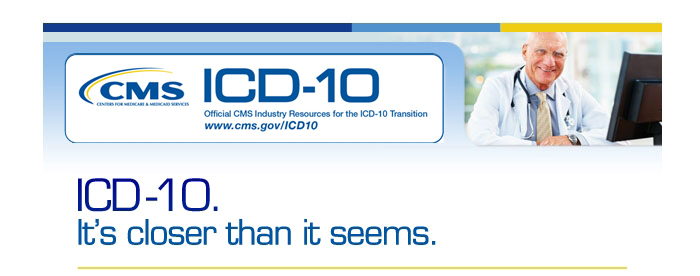Develop Your ICD-10 Communication and Awareness Plan
Although the final rule on the proposed ICD-10 deadline change has not yet been published, it's important to continue planning for the transition to ICD-10. A critical step in planning is to build organizational awareness and to develop a communication plan.
A communication and awareness plan ensures that all your employees and other internal departments as well as external business partners understand their roles and responsibilities for ICD-10 implementation. Think of this communication plan as a formal roadmap for communicating about ICD-10 throughout the transition. A plan is particularly important in larger organizations where you work with many different people and departments that may affect your successful transition to ICD-10. But it can be just as important in a small practice that everyone knows what, why, and how the transition will happen.
Your communication plan should identify:
- Project purpose – Provide ICD-10 background information and clearly describe the current state of ICD-10 progress in your organization, identify goals for the communication and awareness plan, and explain the purpose and expected outcomes of the transition.
- Partners – Identify all parties involved in your ICD-10 transition. For internal staff, you will need to establish a process to communicate governance issues to leaders and assess staff training needs. Coordinate with external groups such as vendors, clearinghouses, and state agencies about implementation updates and changes required in your systems and business processes.
- Messages – Be clear and consistent about what you say, focusing on specific steps and actions that need to happen for the ICD-10 transition.
- Issues – Outline your organization's protocol for identifying potential implementation issues and provide a plan for correcting them.
- Roles and responsibilities – Assign and clearly define communication roles and responsibilities to everyone involved in the transition.
- Timelines – Identify project milestones, secondary tasks, and deadlines. Be certain all project teams know what they will need to do. Develop back-up plans for each milestone to help you handle potential problems.
- Communication methods – Think about how to best communicate within your organization. Emails, in-person meetings, and conference calls may all be effective, but some might work better for different staff and divisions.
While the size of your organization will determine how much planning and documentation will be necessary for the ICD-10 transition, it is always important to keep the lines of communication open. This will help to foster trust among staff members and show that your organization is taking steps to implement ICD-10. |

No comments:
Post a Comment